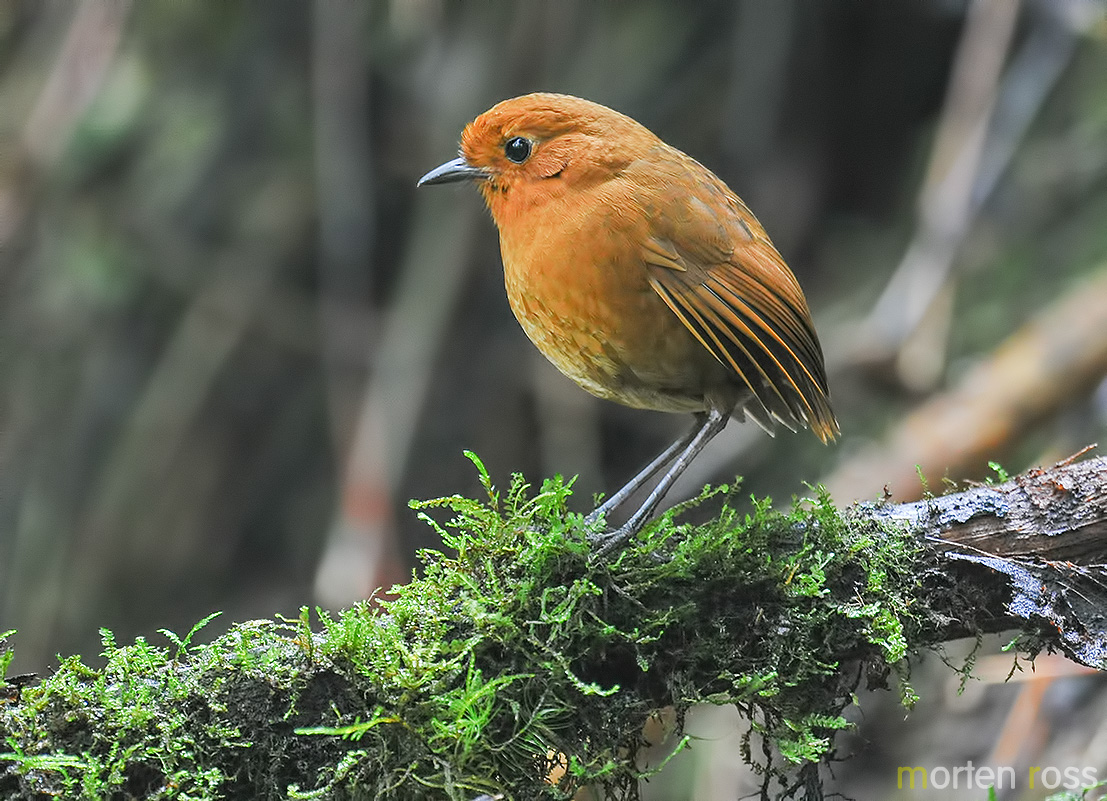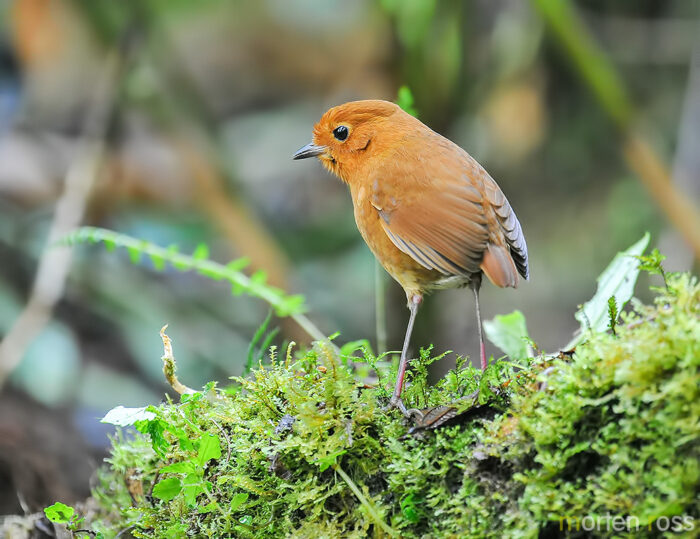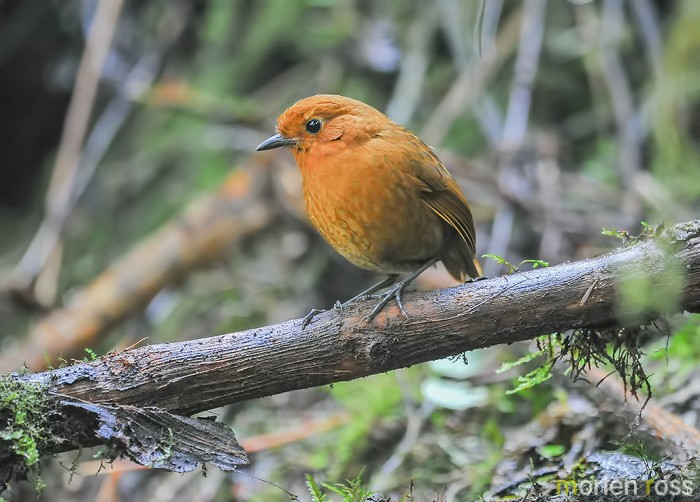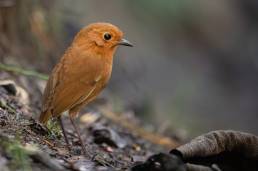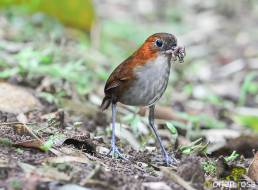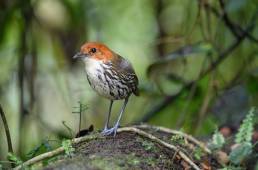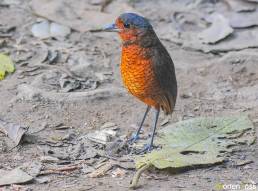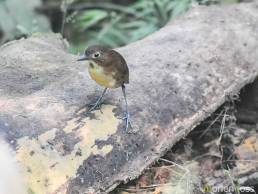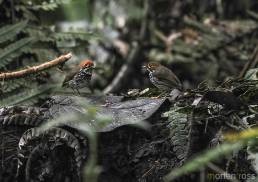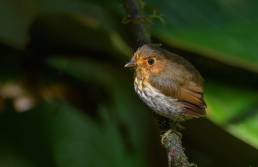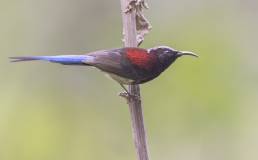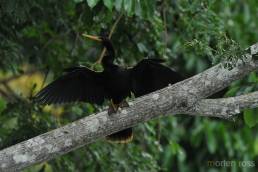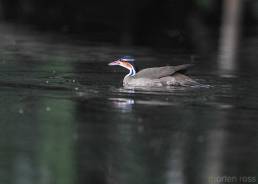Yanacocha has recently succeeded in domesticating the Rufous Antpitta, something my guide was unaware of the first time we went to this reserve in November.
Luckily I wanted to go back to fill idle time in Quito before my departure back to Europe in December.
I was photographing only 20 metres away and still did not see the feeding area, but fortunately I was notified by one member of a birding party who had set up their tripods and cameras. I was lucky to even get a spot in the dense vegetation where I could see it. I didn’t have a tripod and was constantly sliding backwards on the wet soil and thought that this would not go well at all.
I was told another attempt still was not successful in domesticating another species of Antpitta (I don’t remember which on, unfortunately) that roams the forest. They followed the song and carefully cleared a path closer and closer to it as well as offering worms as they went along. Alas – the Antpitta time and time again move further away as to keep a fixed distance.
I think it’s great that more and more reserves put the time and energy into making these elusive birds available to visitors, as they most definitely will come, and thus ensuring the income and stability for the parks and those who live off the tourists. No tourists, and the parks are much more threatened by short term profits.
Prior to these Antpitta feeding areas, photographers spent weeks waiting to get just one blurry shot. Now you get crystal clear shots of species that are both elusive and rare. The Giant Antpitta for one.
For me it’s the incredible sounds of the Antpittas that makes them so interesting:
It sounds like this:
Its “slo-mo” segment:
Its “full speed” segment:
Its “purring” segment:
Altitude 3560 metres.
Pichincha
Ecuador
-0.1275,-78.590556
Last updated on 12 April 2022
